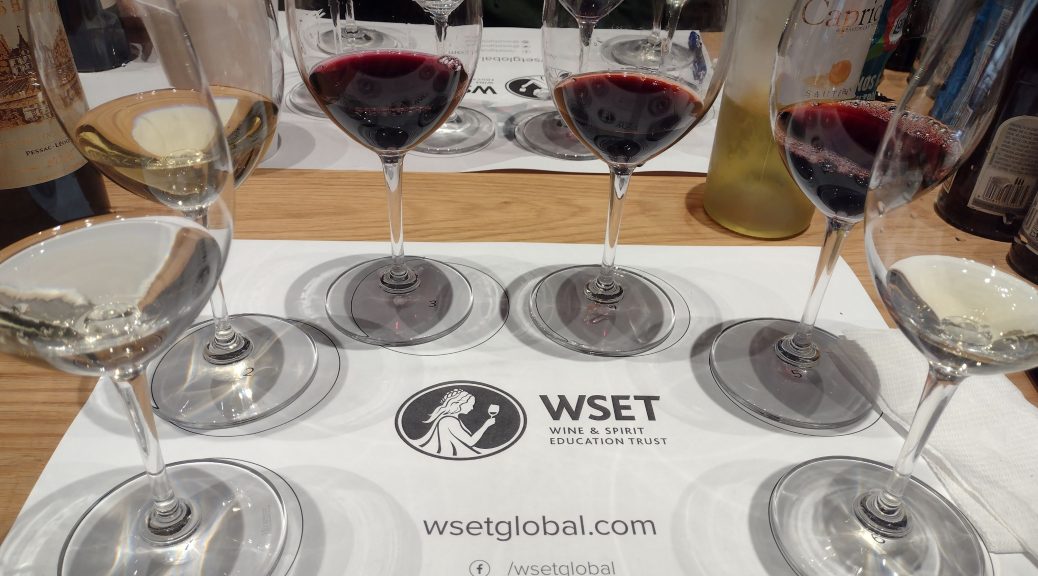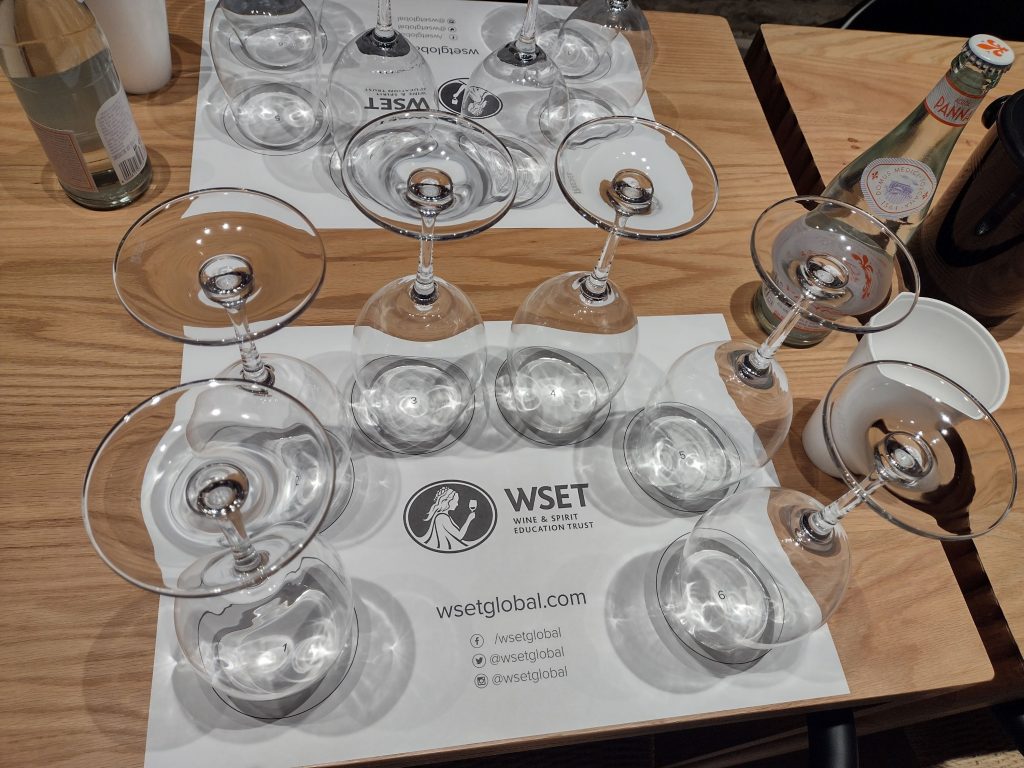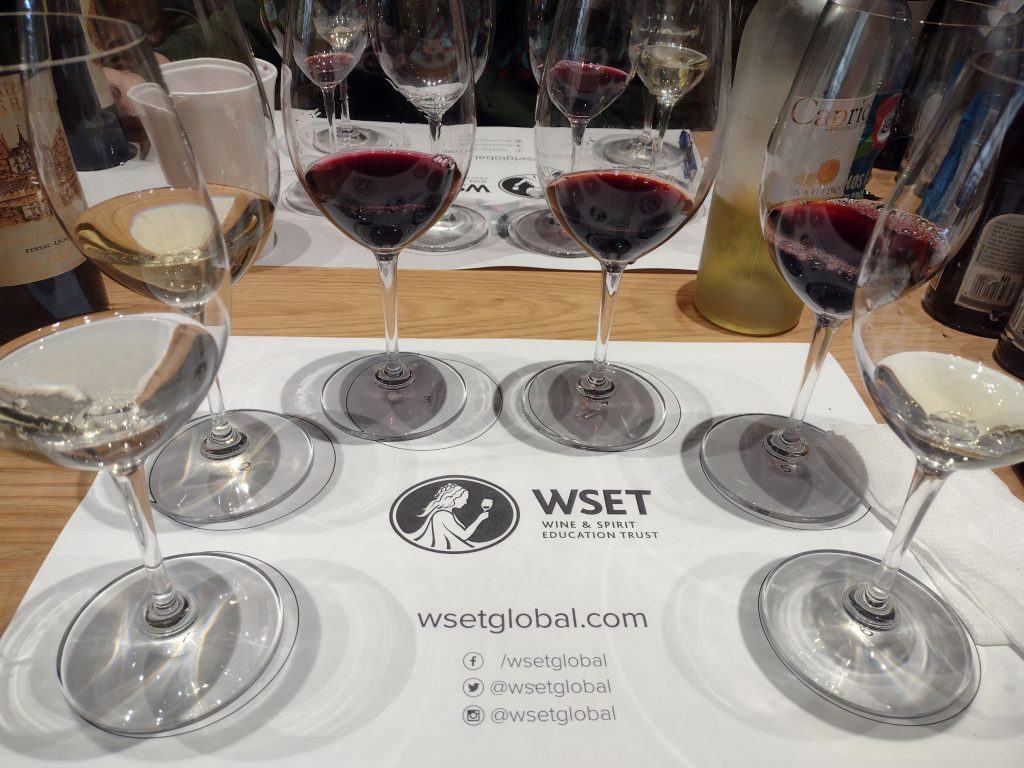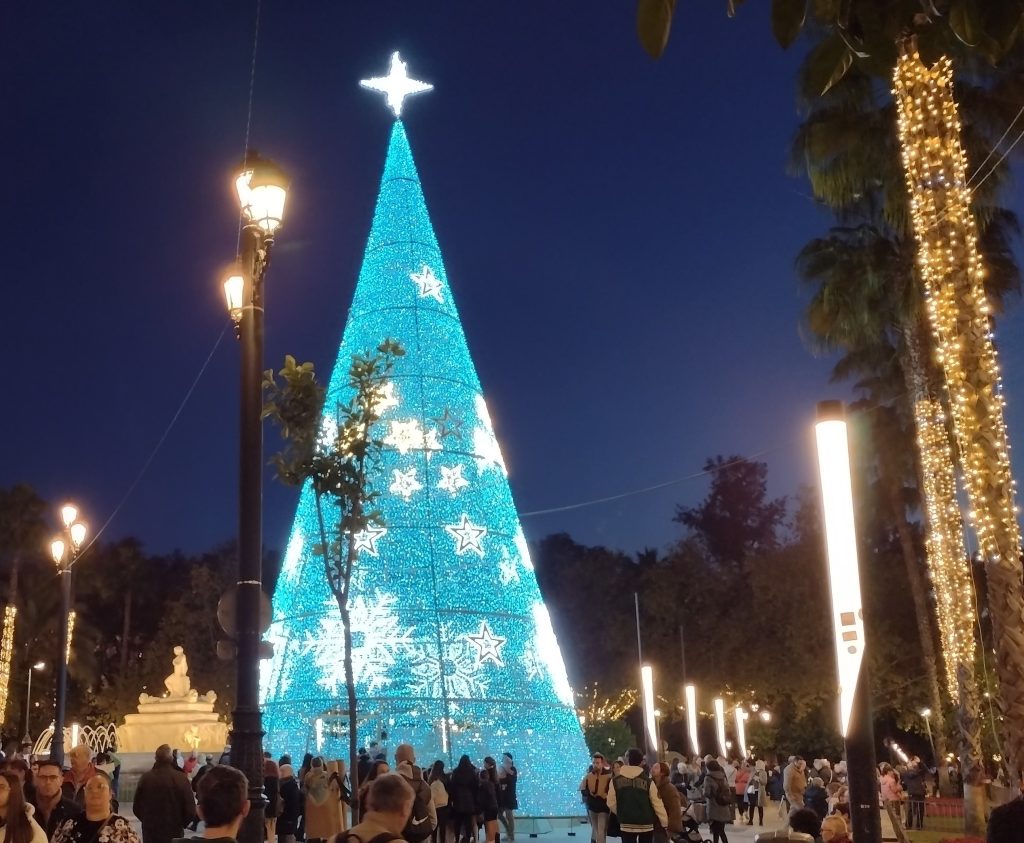
Wine and vino; a day in Seville
It’s 7.30am and Seville is already starting to feel busy. Pedestrians, buses, bikes, scooters, cars and trams are all on the move. Lights appear dotted over apartment blocks as people prepare to start the day. San Bernardo train station is full of early morning commuters and today I am one of them. I step out of the station into the cool air of the December morning and ask a lady for directions. She points me vaguely in the direction of the bullring, my point of reference. I check my bearings on Google maps and start to walk.
Towards Adriano Street
Lowering the volume as the AI voice loudly directs me to cross the road, I follow her instructions. In the dark, I take note of hotel names and other landmarks so that I will be able to find my way back unassisted. I head off in the direction of Calle Adriano watching the sky change from dark to light as I go.
Bars serving coffee look welcoming and I am especially drawn to one tucked into a corner near the cathedral where a woman is perched on a bar stool having coffee. Believing that my course starts at 8.30, I push on preferring to find my destination without distractions as I don’t want to be late. Briefly, I’m reminded of the lines from Robert Frost’s poem The Road Not Taken about keeping the other option for another day but knowing you may not ever come back to it.
Oh, I kept the first for another day!
Yet knowing how way leads on to way,
I doubted if I should ever come back.
Robert Frost
Vinos de la Tierra in Seville
As the sun rises on this December morning, and the orange trees line the roads, I make a mental note to stop and take in the Christmas lights on the way back to the train station. I have plenty of time to wander the streets when the course has finished before catching my train. I find the wine shop, Delatierra, where I discover that the course is starting at 9.00 instead of 8.30. For a moment I wonder whether to head back towards the cathedral to find the bar that had looked so appealing. In the end, convenience wins. I decide to pop into the café next door to the wine shop for a much needed breakfast; coffee and a tostada. I’m lucky it’s pan de pueblo, proper bread, fresh from the bakery.
While I wait for my coffee and toast, I pull out my notebook and review the notes that I have dutifully made from the WineSet Level 1 information booklet. I wonder what the day will bring and if I will be able to follow the technical jargon in Spanish.
After breakfast, I have enough time to walk to the Paseo de Cristobal Colon where I cross the busy road to look at the river. A few minutes later, I make my way back to Delatierra. By now Peter has arrived and, finally, I get to meet the man who has been exchanging emails and WhatsApp messages with me about the course for almost a month.
A well-travelled tutor
Peter shows me into the training room and introduces me to Raul, the tutor. Fortunately, for me Raul has lived and worked in the wine industry in the UK and Australia and is bilingual. Throughout the day, he kindly helps me with the translation of technical words.
Organic wine
Just before 9.00, the other participants arrive. We sit down ready to embark on our Level 1 Wine and Spirit Education Trust qualification. We’re a varied bunch, most of us there for our own interest and some for work purposes. I’m the last one to describe my reasons for taking the course as we go round the table. Raul picks up on my interest in natural and organic wines. He probes me for more information before checking with the group to find out what they know about organic wine production. Raul himself is an organic wine enthusiast and has set up his own bodega in Chipiona producing organic wine.

Tasting grapes
For the first activity on the course Raul gets us to peel a grape. We pop the peeled grape into our mouths and notice the difference in the texture and taste between the pulp and the skin which we chew on later. Tannins come from the skin, he reminds us before moving onto the next activity. The course begins with some theory and after the coffee break, we begin to taste wines. In total, Raul opens six bottles ranging from young wines to mature wines and from heavy reds to sweet white wines. We start with a Sauvignon Blanc 2021, trying to decipher the tastes and smells of grapefruit, lemon and green grass that Raul describes to us.
In order to train our taste buds and senses, Raul also gets us to try water flavoured with different foods and substances such as lemon, salt and black tea so that we begin to recognise the different effects on our taste buds. As the names of different wines, grapes and regions fly around the room, I wonder how I am ever going to remember them all.
Food pairing
After lunch we begin my favourite part: armonización or pairing. Once again we refill our wine glasses and begin to try each wine with a food type: sweet, umami, salty, bitter and spicy. We compare how the flavours make each wine change taste. To demonstrate umami, Raul explains how his friends in Japan add monosodium glutamate (MSG) to their food in order to achieve a savoury taste. Umami is naturally found in foods such as seaweed, mushrooms and aged cheese. In other dishes the taste comes through adding MSG in the form of a white powder. He pulls out a small bag of MSG that looks like a bit like pink salt crystals and hands it to us to taste. We each tip a small pinch onto the palm of our hands and try it.

Moreish
Raul makes it easier for us by explaining the English word ‘moreish’ of which there is no direct translation in Spanish. That taste, he explains that makes you want to eat more and more. We quickly recognise the taste of MSG as the same one in flavoured crisps. We pair the six wines with biscuits (sweet), a delicious Spanish aged sheep cheese (umami) and chilli flavoured crisps (spicy) observing how the flavour of the wine changes.
I loved noticing how the flavours change the wine. For homework, Raul encourages us to get friends together, open different bottles of wine and try them with various food types to compare flavours. It’s the sort of homework that I think I would enjoy.
The exam
At the end of the course, there’s time to re-read our notes before taking the exam. Tiredness and information overload has now set in. It’s a multiple choice exam and, while we are blessed with an easy question about the origin of Rioja, there are others about the characteristics of wines and grapes that I simply can’t remember. I wonder what happens in my brain that means it’s harder to retain information in my second language! I turn to the process of elimination to work out the answers asking Raul for a translation of a technical word and, finally, hand in my answer sheet. I’m the last one to finish.
La Puerta de Jerez: the wonders of Seville
It’s still daylight when I step outside. Exhausted from the early morning train, lack of sleep and technical terms, I make my way to the plaza, La Puerta de Jerez. I sit down on a bench opposite the Christmas tree.
I pull out the WineSET information booklet and look up the information that I couldn’t answer in the exam. Some of the questions I doubted I’ve managed to answer correctly, but the one about Port wine was wrong. Oh well. It’s an area for improvement and I wonder if the best thing would be to make a trip to Oporto to learn more about the wine. As I study the booklet, a small cheer and a round of applause ring out into the air. I look up and see the Christmas lights have come on. In true Spanish style, the Christmas tree is a myriad of brightly coloured light bulbs and the streets of Seville are illuminated with colourful Christmas images. I put my booklet away and sit back to admire the city.

One thought on “Wine and vino; a day in Seville”
Great post Rebecca, thank you for sharing your experience. I really felt like I was there with you in Seville on that December morning, the dark streets, the coffee shops – I loved the Robert Frost lines too. And I could almost taste the wines, and the food, you described. Thank you for explaining umami; I’ve heard it mentioned on MasterChef but didn’t really know what it was – now I get it! The exam sounded tough after a long day of eating and drinking and I got a real sense of how much you had to concentrate to get through it (well done for passing by the way!) The beautiful sight of the Christmas lights was a perfect end to an forgettable day.
Comments are closed.